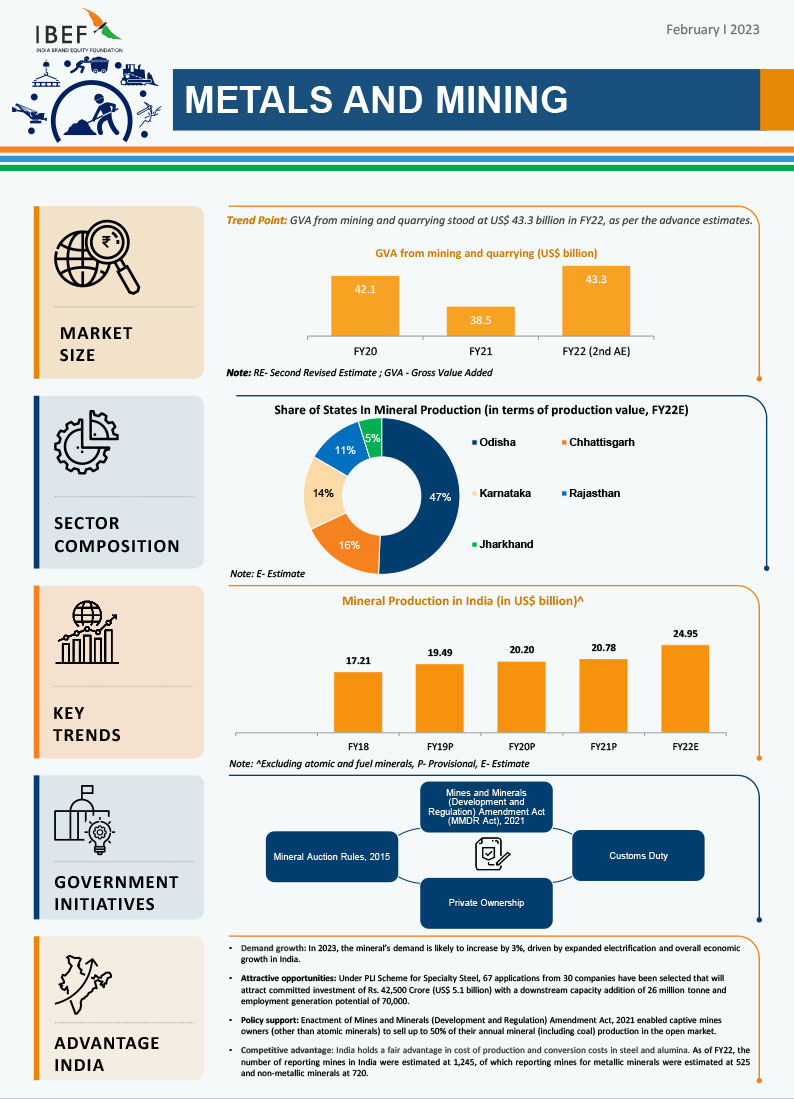Governance
The Mines and Minerals (Development and Regulation) Amendment Bill, 2023
- 04 Aug 2023
- 6 min read
For Prelims: Mines and Minerals (Development and Regulation) (MMDR) Act, 1957, Mineral sector, Net-Zero emission by 2070.
For Mains: The Mines and Minerals (Development and Regulation) Amendment Bill, 2023.
Why in News?
The Rajya Sabha has passed the Mines and Minerals (Development and Regulation) Amendment Bill, 2023 for making amendments to the Mines and Minerals (Development and Regulation) (MMDR) Act, 1957.
What is the Background?
- The MMDR Act, 1957 was amended in 2015 to introduce auction-based mineral concession allocation for transparency, create District Mineral Foundation (DMF) for the welfare of affected communities, establish National Mineral Exploration Trust (NMET) to promote exploration, and impose stricter penalties for illegal mining.
- The Act was further amended in 2016 and 2020 to address specific emergent issues and was last amended in 2021 to bring further reforms in the sector, such as, removing the distinction between captive and merchant mines, etc.
- However, the mineral sector required more reforms particularly for increasing exploration and mining of Critical Minerals that are essential for economic development and national security in the country.
- The lack of availability of the critical minerals or concentration of their extraction or processing in a few geographical locations may lead to supply chain vulnerabilities and even disruption of supplies.
- Critical minerals have gained significance in view of India's commitment towards energy transition and achieving Net-Zero emission by 2070.
What are the Key Provisions under the Bill?
| Key Provisions | MMDR Act 1957 | MMDR Amendment Bill |
| Private Sector to Mine Atomic Minerals | The Act allows the only State agencies in the exploration of the atomic minerals such as lithium, beryllium, niobium, titanium, tantalum and zirconium. |
The Bill allows the private sector to mine six out of 12 atomic minerals such as lithium, beryllium, niobium, titanium, tantalum and zirconium. When it becomes an Act, Centre will have powers to auction mining lease and composite licence for critical minerals such as gold, silver, copper, zinc, lead, nickel etc.. |
| Auction for Exploration Licence |
The exploration licence will be granted by the state government through competitive bidding. The central government will prescribe details such as manner of auction, terms and conditions, and bidding parameters for exploration licence through rules. |
|
| Maximum Area in which Activities are Permitted | Under the Act, a prospecting licence allows activities in an area up to 25 square kilometres, and a single reconnaissance permit allows activities in an area up to 5,000 square kilometres. |
The Bill allows activities under a single exploration licence in an area up to 1,000 square kilometres. After the first three years, the licencee will be allowed to retain up to 25% of the originally authorised area. |
| Incentive for exploration Licence | If the resources are proven after exploration, the state government must conduct an auction for mining lease within six months of the submission of the report by the exploration licencee. The licencee will receive a share in the auction value of the mining lease for the mineral prospected by them. |
What is the Scenario of the Mining Sector in India?
- Backbone of Manufacturing:
- Mining industry plays a crucial role in the country's economy, serving as the backbone for manufacturing and infrastructure sectors.
- According to the Ministry of Mines, the total value of mineral production (excluding atomic and fuel minerals) during 2021-22 amounted to Rs 2,11,857 crore.
- Scope:
- India ranks 4th globally in terms of iron ore production and is the world's 2nd largest coal producer as of 2021.
- Combined Aluminium production (primary and secondary) in India stood at 4.1 MT per annum in FY21 becoming the 2nd largest in the world.
- In 2023, the mineral’s demand is likely to increase by 3%, driven by expanded electrification and overall economic growth in India.
- India holds a fair advantage in production and conversion costs in steel and alumina. Its strategic location enables export opportunities to develop as well as fast-developing Asian markets.
- India ranks 4th globally in terms of iron ore production and is the world's 2nd largest coal producer as of 2021.
UPSC Civil Services Examination Previous Year Question (PYQ)
Mains
Q. Despite India being one of the countries of Gondwanaland, its mining industry contributes much less to its Gross Domestic Product (GDP) in percentage. Discuss. (2021)
Q. “In spite of adverse environmental impact, coal mining is still inevitable for development”. Discuss. (2017)







